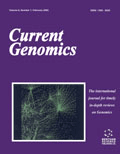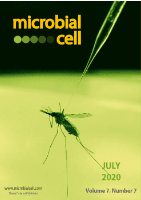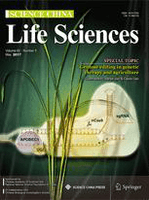
All Life
Scope & Guideline
Unveiling Insights in Life Sciences
Introduction
Aims and Scopes
- Molecular and Cellular Biology:
Research targeting the molecular mechanisms underlying cellular functions, including studies on gene expression, protein interactions, and cellular signaling pathways. - Environmental and Ecological Studies:
Investigations into the interactions between organisms and their environments, focusing on biodiversity, ecosystem dynamics, and the impact of environmental changes on biological systems. - Health and Disease Mechanisms:
Exploration of the biological basis of diseases, including genetic, metabolic, and immunological aspects, with a focus on potential therapeutic interventions. - Agricultural and Plant Sciences:
Studies on plant biology, agricultural practices, and the use of biotechnological approaches to enhance crop yield and sustainability. - Microbiology and Pathogen Research:
Research into microbial life, including pathogenic organisms, their mechanisms of action, and implications for human health and disease management. - Biotechnology and Bioinformatics:
Application of biotechnological tools and computational methods to analyze biological data, facilitating advancements in genomics, proteomics, and systems biology.
Trending and Emerging
- Microbiome Research:
There is an increasing interest in understanding the human and environmental microbiomes, with studies exploring their roles in health, disease, and ecosystem functioning. - Omics Technologies:
The application of genomics, proteomics, and metabolomics is on the rise, enabling comprehensive analyses of biological systems and facilitating personalized medicine approaches. - Sustainable Agriculture and Food Security:
Research addressing sustainable farming practices, crop resilience, and food security is gaining attention, driven by global challenges such as climate change and population growth. - Cancer Biology and Therapeutics:
An upsurge in studies focusing on the molecular mechanisms of cancer and the development of novel therapeutic strategies, including immunotherapy and targeted treatments, is evident. - Environmental Health and Toxicology:
Increased awareness of the impacts of environmental factors on human health is leading to more studies on toxicological assessments and the effects of pollutants. - Bioinformatics and Data Science in Biology:
The integration of bioinformatics and data science methodologies in biological research is emerging, facilitating large-scale data analysis and insights into complex biological questions.
Declining or Waning
- Traditional Herbal Medicine:
The focus on traditional herbal remedies has waned, possibly due to a shift towards more evidence-based approaches in medical research and a growing emphasis on pharmacological validations. - Basic Taxonomic Studies:
The frequency of studies purely dedicated to taxonomic classification of organisms has decreased, likely because newer methodologies in molecular phylogenetics have taken precedence. - In vitro Studies without Clinical Relevance:
Research that does not transition from laboratory settings to clinical applications or practical implications appears to be less favored, as journals increasingly prioritize studies with clear translational potential. - Single-Organism Studies:
Research focusing solely on single organisms is declining, as interdisciplinary and systems biology approaches that consider interactions within ecosystems gain traction.
Similar Journals

FOLIA BIOLOGICA-KRAKOW
Empowering researchers with pivotal insights in biological sciences.FOLIA BIOLOGICA-KRAKOW, published by the renowned Polish Academy of Sciences, Institute of Systematics and Evolution of Animals, serves as a pivotal platform for advancing research in the fields of Biochemistry, Genetics, and Molecular Biology. Since its inception in 1953, this journal has consistently contributed to the academic dialogue, focusing on a diverse range of topics, including evolutionary biology, molecular genetics, and ecological biochemistry. Although currently classified in Q4 quartiles according to the 2023 categorizations in both Biochemistry, Genetics and Molecular Biology (miscellaneous) and Medicine (miscellaneous), its dedicated efforts to disseminate critical findings and foster scholarly exchange ensure its relevance and growth in the scientific community. FOLIA BIOLOGICA-KRAKOW is not Open Access, but researchers can access its publications through institutional subscriptions or library services, making it a valuable resource for scientists seeking to enrich their understanding of biological processes. With its commitment to excellence and innovation in biological research, this journal remains an essential reference for researchers, professionals, and students alike, contributing significantly to the evolution of contemporary biological sciences.

CURRENT GENOMICS
Connecting research and application in genomics.CURRENT GENOMICS is a premier journal published by Bentham Science Publishers that focuses on the expansive field of genomics, including both clinical and molecular genetics. With the ISSN 1389-2029 and E-ISSN 1875-5488, this esteemed journal has been disseminating significant scientific insights since its inception in 2000 and continues to contribute to the field through 2024. Based in the United Arab Emirates, CURRENT GENOMICS boasts a Q3 ranking in both the genetics and clinical genetics categories for 2023, reflecting its growing impact in the scientific community. Although not an open-access journal, it provides valuable content that supports researchers and professionals in navigating the complexities of genetic research and its applications. By publishing original research articles, reviews, and case studies, CURRENT GENOMICS aims to foster a deeper understanding of genomic science and its implications for medicine, thus playing a critical role in the advancement of genetics and biomedical research.

Microbial Cell
Innovating the study of microbial functions and genetics.Microbial Cell is a distinguished open-access journal published by SHARED SCIENCE PUBLISHERS OG, focusing on the dynamic fields of microbiology, biochemistry, and molecular biology. Since its establishment in 2014, Microbial Cell has been at the forefront of disseminating cutting-edge research essential for advancing our understanding of microbial functions and interactions. With a commendable impact factor and ranking in the top quartiles (Q1 and Q2) across several categories, including Applied Microbiology and Biotechnology and Parasitology, this journal serves as an invaluable resource for researchers, professionals, and students alike. It features a comprehensive scope that encompasses the latest findings in genetics, cell biology, and virology, facilitating the academic community's access to high-quality peer-reviewed work. Microbial Cell not only contributes to advancing microbial sciences but also fosters an inclusive platform for knowledge sharing and collaboration in the scientific community.

YEAST
Elevating the understanding of yeast for scientific progress.YEAST is a renowned peer-reviewed journal published by WILEY, dedicated to advancing the understanding of yeast biology and its applications in various scientific fields. Since its inception in 1985, YEAST has significantly contributed to the disciplines of microbiology, biotechnology, biochemistry, and genetics, achieving respectable rankings within its categories, including Q2 status in Applied Microbiology and Biotechnology and Q2 in Biotechnology as of 2023. With an emphasis on high-quality research, it explores diverse aspects of yeast organisms, from their cellular mechanisms to biotechnological applications. Although it does not currently offer an open-access option, the journal provides valuable insights and findings that are applicable to both academia and industry, making it an essential resource for researchers, professionals, and students interested in the functional and applied dimensions of yeast. With its editorial rigor and commitment to quality, YEAST continues to be a vital platform for disseminating innovative research that shapes future biotechnological advancements.

PERIODICUM BIOLOGORUM
Pioneering Discoveries in Biochemistry and GeneticsPERIODICUM BIOLOGORUM is a well-established interdisciplinary journal published in Croatia that focuses on advancing the fields of agricultural and biological sciences, biochemistry, genetics, and molecular biology, along with general medicine. With its roots dating back to 1980, the journal has been an essential platform for the dissemination of original research, reviews, and theoretical studies, fostering collaboration and dialogue among researchers within these diverse areas. While currently holding a Q4 quartile ranking in several categories, including agricultural and biological sciences, biochemistry, and general medicine, it provides a significant opportunity for authors seeking to contribute to the body of knowledge in these sectors. Although Open Access options are not available, the journal's rich history and commitment to quality scholarship make it a valuable resource for professionals, researchers, and students alike, aiming to stay informed about current trends and advancements in biological research and its applications.

Open Biology
Fueling scientific exploration with unrestricted access.Open Biology is a prestigious, interdisciplinary journal published by the Royal Society that has been paving the way in the fields of Biochemistry, Genetics and Molecular Biology, Immunology, and Neuroscience since its inception in 2011. Catering to a global audience of researchers, professionals, and students, Open Biology operates under an open access model, facilitating the unrestricted dissemination of high-quality research findings. With a current impact factor that positions its categories in the top quartile (Q1) and impressive Scopus rankings—evidencing its influence and reach—this journal serves as a vital platform for innovators and scientific inquiries aimed at advancing our understanding of life sciences. The journal's commitment to publishing cutting-edge research makes it an essential resource for those at the forefront of scientific exploration.

Cell Reports Methods
Bridging Disciplines for Impactful Scientific ProgressCell Reports Methods is a cutting-edge journal published by CELL PRESS, focusing on innovative methodologies in the vast fields of biochemistry, genetics, biotechnology, and radiological sciences. Launched in 2021, it has rapidly ascended to attain a Q1 ranking across multiple disciplines in the latest 2023 metrics, reflecting its influential contribution to the scientific community. With an emphasis on practical and rigorous experimental approaches, this journal serves as a vital resource for researchers looking to advance their methodologies and collaborate on significant findings in their respective specialties. Despite not being an open-access publication, Cell Reports Methods ensures broad accessibility through institutional subscriptions, allowing researchers from various backgrounds to engage with high-quality scholarly work. The journal presents a unique platform for sharing insights from interdisciplinary methods that foster innovation and discovery, ultimately shaping the future of scientific research.

Science China-Life Sciences
Exploring the frontiers of life sciences with rigor and impact.Science China-Life Sciences, published by SCIENCE PRESS, is a premier academic journal that stands at the forefront of innovative research and discoveries in the fields of life sciences, spanning crucial areas such as agricultural and biological sciences, biochemistry, genetics, molecular biology, and environmental science. With an impressive Q1 ranking in its respective categories—ranked #5 in Agricultural and Biological Sciences, #7 in Environmental Science, and #17 in Biochemistry, Genetics and Molecular Biology—this journal is recognized for its rigorous peer-review process and significant impact within the scientific community, as reflected in its high percentiles (97th and 92nd). Maintained as an Open Access publication, it ensures broad dissemination and accessibility of research findings, fostering collaboration and knowledge sharing among researchers, professionals, and students alike. Given its position in the research landscape and its commitment to high-quality scholarship, Science China-Life Sciences plays a vital role in advancing life sciences research, supporting scientists in addressing global challenges through innovative biological solutions.

FASEB BioAdvances
Elevating Understanding of Biological Processes GloballyFASEB BioAdvances, published by WILEY, is an esteemed open-access journal dedicated to advancing the fields of biochemistry, molecular biology, and physiology. Since its inception in 2019, the journal has rapidly established a significant presence within the academic community, boasting an impressive impact factor reflective of its Q2 and Q3 standings across various categories, including Biochemistry, Genetics and Molecular Biology, Cancer Research, Molecular Medicine, and Physiology. The journal aims to disseminate high-quality research and innovative findings to enhance the understanding of biological processes, making it a vital resource for researchers, professionals, and students alike. With its commitment to open access, FASEB BioAdvances ensures that groundbreaking research is available to a global audience, facilitating collaboration and exploration in these rapidly evolving scientific domains.

JOURNAL OF BIOLOGICAL CHEMISTRY
Illuminating Breakthroughs in Molecular BiologyJOURNAL OF BIOLOGICAL CHEMISTRY, published by Elsevier, is a premier interdisciplinary journal dedicated to advancing our understanding of biochemistry, cell biology, and molecular biology. With a prestigious history dating back to 1945 and an impressive convergence of research expected to continue through 2024, this journal holds a Q1 ranking in all three of its core categories, signaling its critical influence in the respective fields, supported by a robust Scopus ranking that places it among the top echelons of internationally recognized research. Although currently not available as Open Access, the journal is essential for researchers and professionals looking to stay abreast of the latest breakthroughs and innovations in biochemical research. With a deep commitment to scientific rigor and a focus on diverse topics ranging from cellular processes to molecular mechanisms, the Journal of Biological Chemistry serves as a vital resource for the academic community, shaping the future of biological sciences.